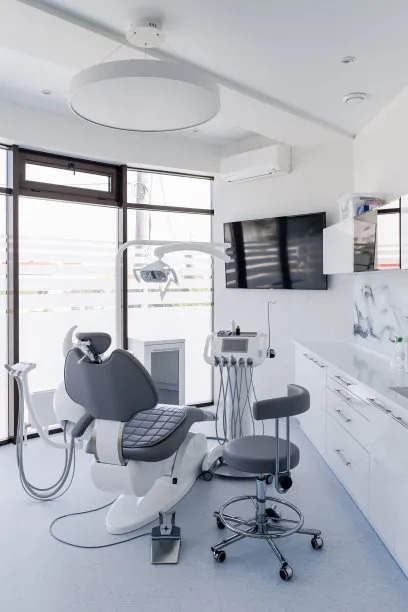The Essential Guide to Extracting a Tooth Safely and Effectively What You Need to Know
Summary: Extracting a tooth can be a daunting task, often filled with anxiety for the patient. However, a methodical approach ensures the process is conducted safely and effectively. This guide offers crucial insights into the required preparations, the actual extraction procedure, post-operative care, and common complications that might arise. By understanding these aspects thoroughly, both patients and dental care providers can significantly reduce the risks associated with tooth extraction. Essential tools, techniques, and patient management tips will be highlighted as well, making this guide indispensable for anyone considering or performing a tooth extraction.
1. Essential Preparations for Tooth Extraction

Before extracting a tooth, it is essential to conduct a thorough evaluation of the patients dental and medical history. This includes understanding any underlying medical conditions that might impact the extraction process, such as diabetes or blood disorders. Additionally, a detailed assessment of the tooths location and condition will help in formulating the best approach to removal.
Once the assessment is complete, proper imaging, such as X-rays, should be utilized to understand the tooths root structure and its relationship with surrounding tissues. This critical step aids in anticipating potential complications and planning an effective extraction strategy. Furthermore, preparing the patient by discussing what to expect during and after the procedure is vital for alleviating anxiety.
Ensuring that all necessary tools and materials are on hand is another important preparation step. This includes anesthesia, surgical instruments, gauze, and any medications required for post-operative care. Being well-prepared can significantly enhance the efficiency and safety of the extraction process.
2. The Tooth Extraction Procedure Explained
The tooth extraction procedure typically begins with administering local anesthesia to numb the area around the tooth. This step is crucial for ensuring patient comfort, as it minimizes pain during the extraction process. The dosage and type of anesthesia should be tailored to the patients needs, further enhancing safety and effectiveness.
The next stage involves carefully loosening the tooth from the gums and underlying bone. Using specialized dental instruments, the dentist will rock the tooth back and forth to widen the socket while being cautious not to disturb neighboring teeth or tissue. This gentle approach reduces trauma and aids in smoother extraction.
Finally, the tooth is removed from its socket. If necessary, the dentist may need to section the tooth into smaller pieces to facilitate extraction. After the removal, gauze is placed over the extraction site to control bleeding. The dentist will provide detailed post-operative instructions to ensure optimal healing and reduce the risk of complications.
3. Post-Operative Care for Extraction Sites
Following a tooth extraction, effective post-operative care is crucial for promoting healing and minimizing discomfort. Initially, patients should apply pressure to the gauze for at least 30 minutes to help stem bleeding. If bleeding persists or is excessive, seeking further dental assistance is recommended.
Patients are also advised to avoid certain activities, such as strenuous exercise, smoking, or drinking through straws, for at least 24 hours. These actions can dislodge the blood clot that forms at the extraction site, leading to complications like dry socket, which can be quite painful.
Maintaining a soft diet will aid in the healing process. Foods should be easy to chew and should not require much force, as this could disturb the extraction site. Staying hydrated and following prescribed medication regimens, including pain relievers and antibiotics, will further support recovery.
4. Recognizing and Managing Complications
While many tooth extractions occur without issue, it is important for both patients and care providers to be aware of potential complications. Common issues post-extraction include excessive bleeding, infection, and dry socket. Recognizing the signs of these complications early can lead to prompt management and treatment.
In the event of persistent bleeding, it is crucial to apply firm pressure with gauze and to avoid any actions that may exacerbate the situation. If bleeding continues, immediate dental consultation is necessary. Symptoms of infection may include fever, swelling, and persistent pain at the extraction site. Any of these symptoms should prompt patients to contact a healthcare provider without delay.
Dry socket occurs when the blood clot fails to form or is dislodged, exposing underlying bone and nerve endings. Patients experiencing severe pain a few days after surgery should consult their dentist. Managing any discomfort through pain relief and following appropriate care routines will significantly alleviate risks of post-operative complications.
In conclusion, extracting a tooth safely and effectively requires careful planning, execution, and aftercare. By understanding the critical steps involved in this process, patients can better prepare and reduce associated anxieties. Long-term oral health organizations recommend consistent follow-ups and communication with dental professionals, ensuring prompt interventions when needed.
Ultimately, with the right knowledge and approach, tooth extraction can be a straightforward procedure leading to better overall dental health. Staying informed allows both patients and professionals to navigate this process confidently and successfully.
This article is compiled by Vickong Dental and the content is for reference only


